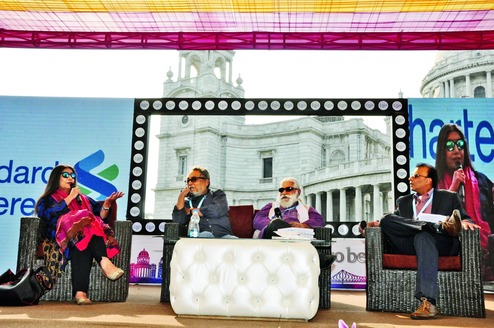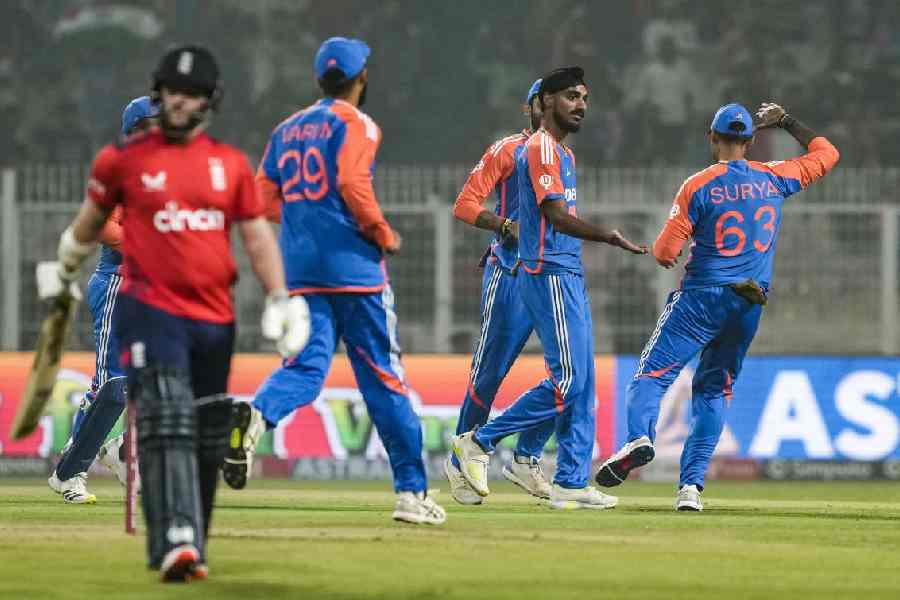
Victoria Memorial: The context of the story of Shatranj ke Khilari is not of a foreign invader invading native principalities but about native rulers being absorbed in their own game without a clue as to what was going on.
"Initially Satyajit Ray was concerned about how to transform Premchand's long short story into a film. How much can you do with two players playing chess! Then he hit upon the idea of a parallel story which is only alluded to by Premchand," recalled Suresh Jindal, the film's producer. Jindal was part of a panel in conversation with author Balaji Vittal, at the Tata Steel Kolkata Literary Meet, co-organised by Victoria Memorial Hall in association with The Telegraph.
A line spoken by a character in the story, that the fauj had reached Kanpur while they were busy playing, germinated into a full-blown parallel track. "Chess provided the political metaphor. Ray made the narrator, Amitabh Bachchan, spell it out at the beginning: 'Yeh lad nahin rahe hain, yeh khel rahe hain,'" pointed out Vittal.
"My father held Manik da in great regard. So when he called to seek permission to make the film he happily agreed," recalled Alok Rai, Premchand's grandson.
Yet, when Ray decided to make changes, including the conclusion, he did not want to take a chance. "He knew Hindi litterateurs would be up in arms if he took creative liberty. So he sent a five-page explanation to Amrit Rai ji," said Jindal.
Shabana Azmi recalled her excitement at being part of a Ray film. "I could not believe the great Ray was calling me." She met him at Tehran film festival but did not have the courage to ask about her role. "When I finally landed on the sets, clad in jeans and a T-shirt, and asked for my briefing, he simply told me to change into costume. I was puzzled but once I changed into a begum's costume I realised my posture had changed. Then he said he couldn't have communicated what he wanted to if I was in jeans."
Shabana got nervous when Ray proposed to shoot the toughest of her three scenes first. "After the shot, he praised me in public but took me to a side and said that my lines were coming out as a strong tirade. 'Can't you make it part hurt, part rueful?' he asked."
She also recalled how differently he directed each actor. "With Sanjeev Kumar he was precise, treating him almost like a robot, showing till what height he wanted him to raise a hand. But he gave no instruction to Saeed Jaffrey."
"When a story is turned to a film, the discourse is on how much is lost in the process. But in this case it was all about gains. Ray gave it a larger resonance," Rai summed up the 1980 classic.











